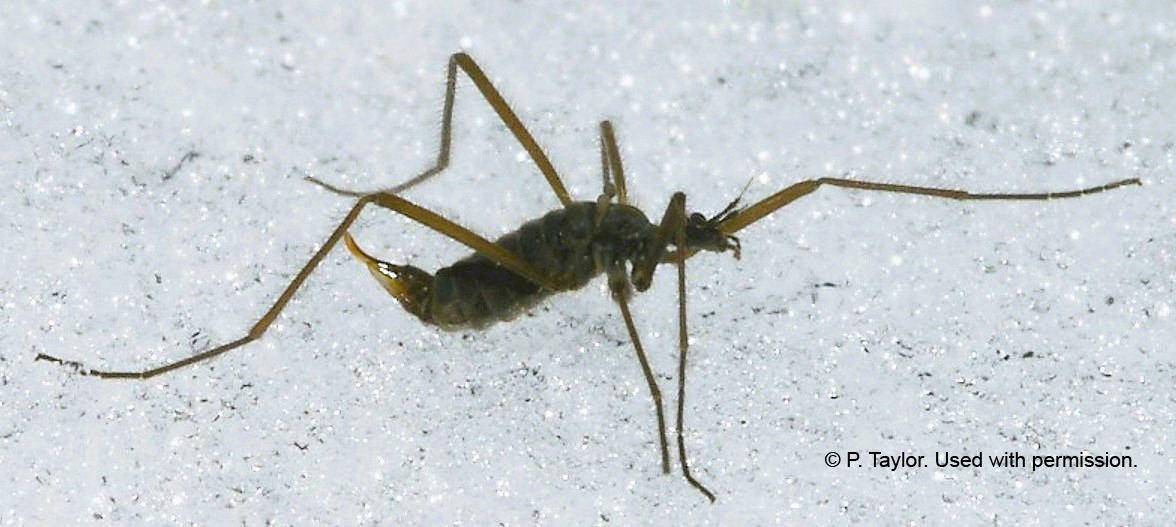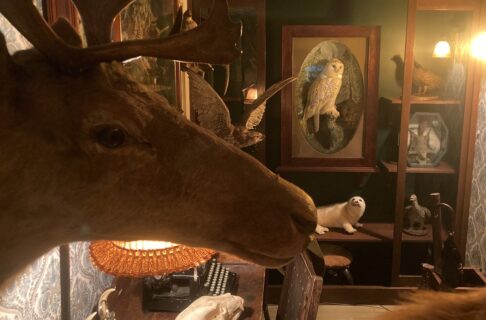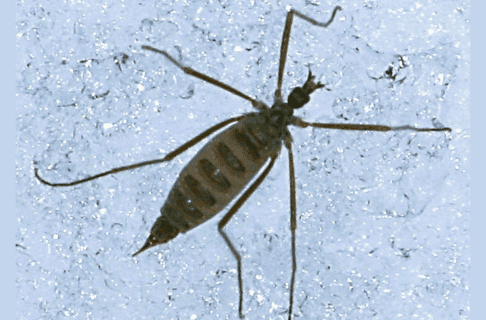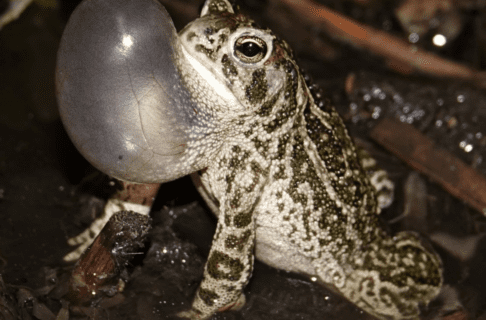Posted on: Wednesday February 7, 2024
As you trek across the snowy landscape in a (typical) Manitoba winter, one of the last creatures you might expect to be sharing the trail with is an insect. One of the reasons you are in the woods during this season might be to avoid insects! But as the temperatures hover around the freezing mark, keep your eyes open and you might be lucky enough to see a snow fly walking alongside you. Snow flies (genus Chionea) are harmless and flightless species of crane fly (family Tipulidae) (Fig. 1). Crane flies are more likely recognized as the long-legged, skinny flies that are often mistaken to be giant mosquitoes (but don’t feed as adults or only sip nectar) (Fig. 2).
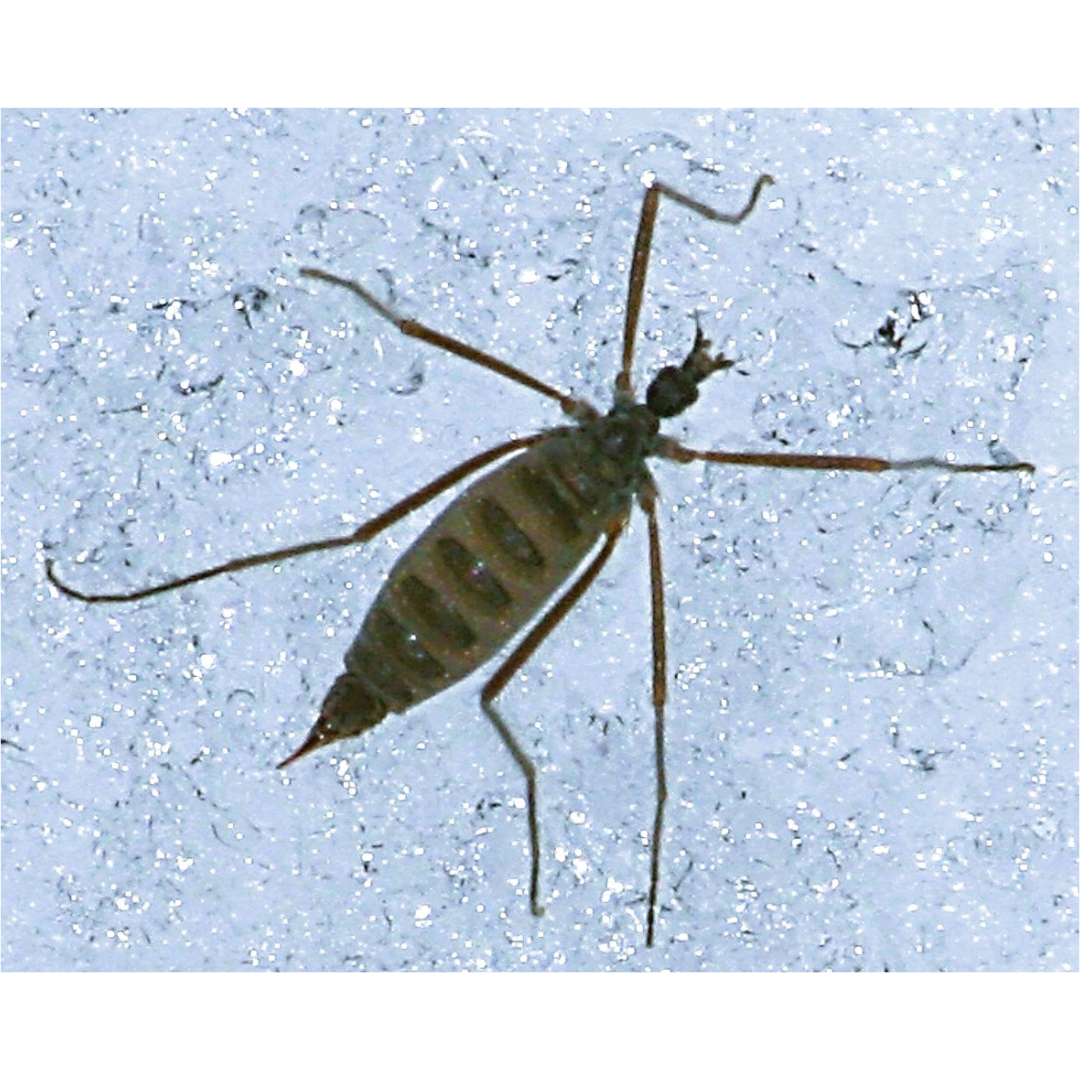
Figure 1: A female snow fly (Chionea valga), a wingless member of the crane fly family (Tipulidae), walking on snow in January 2010 (© P. Taylor, used with permission).

Figure 2: A more typical warm-weather crane fly with wings and very long, thin legs from the Museum collection with a pencil for scale.
Snow flies are highly specialized, as you might expect given they are active in winter rather than in summer as other crane flies. Their odd habits have made them difficult to study; much less is known about the lives of snow flies compared to their relatives. They are usually found under the snow in what is called the subnivean zone, the space between the snow pack and the ground (Fig. 3). Here, there is an insulated layer with stable temperatures just below or near the freezing mark that harbours an entire community of lichens, mosses and other plants, mice, voles, shrews, and many invertebrates. Snow flies live in the decaying, woody debris of the forest floor under this snowy blanket. Eggs are laid in winter and the larvae are thought to feed on plant debris or, perhaps, are coprophagous – that is, they might eat mouse or vole poop (yum!). They pupate in late summer or fall and emerge as adults in winter, under the snow. The adults, like most other crane flies, are not known to feed, although they do sip water and readily drink maple syrup when offered in lab conditions.
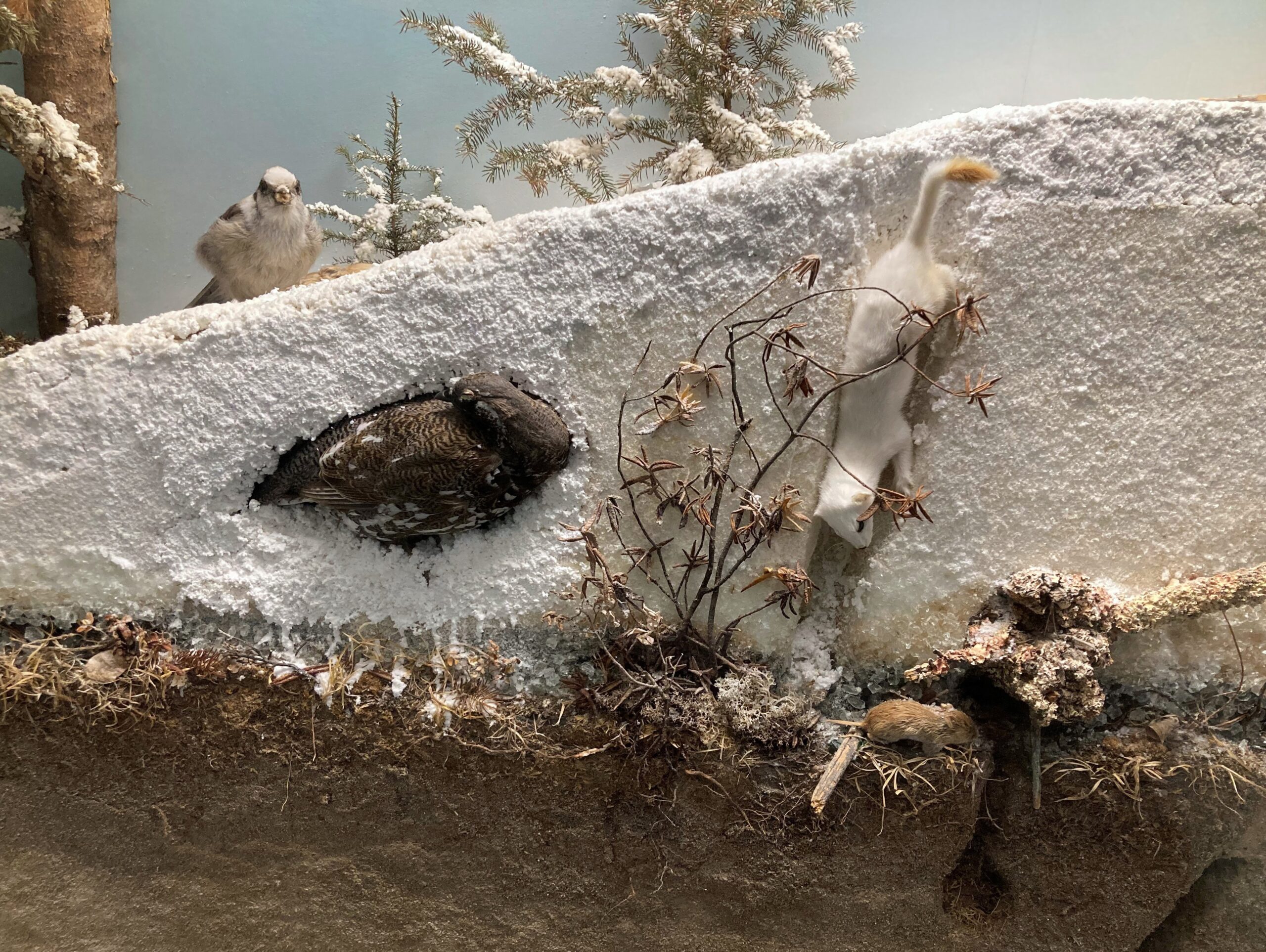
Figure 3: A cutaway view of a layer of snow and the forest floor to show the subnivean zone, the space between the snow and the ground that provides a stable and relatively warm environment for small mammals, invertebrates, and plants to survive the winter. This is a mini-diorama in the Arctic/Sub-Arctic Gallery of the Manitoba Museum.
Warm-weather crane flies live for only a few days, just long enough to find a mate and have females lay eggs. Snow flies are known to live for as long as two months, perhaps tied to a slower metabolism in a colder environment, but also perhaps a specialization that provides time to wait for favourable conditions to permit emergence from beneath the snow. When daytime highs go above -2°C, they go walkabout for tens of metres, perhaps farther, to find a mate (Fig. 4).

Figure 4: A female (left) and male (right) snow fly (Chionea valga) walking over snow one January, searching for each other along a trail in Pinawa, Manitoba (© P. Taylor, used with permission).
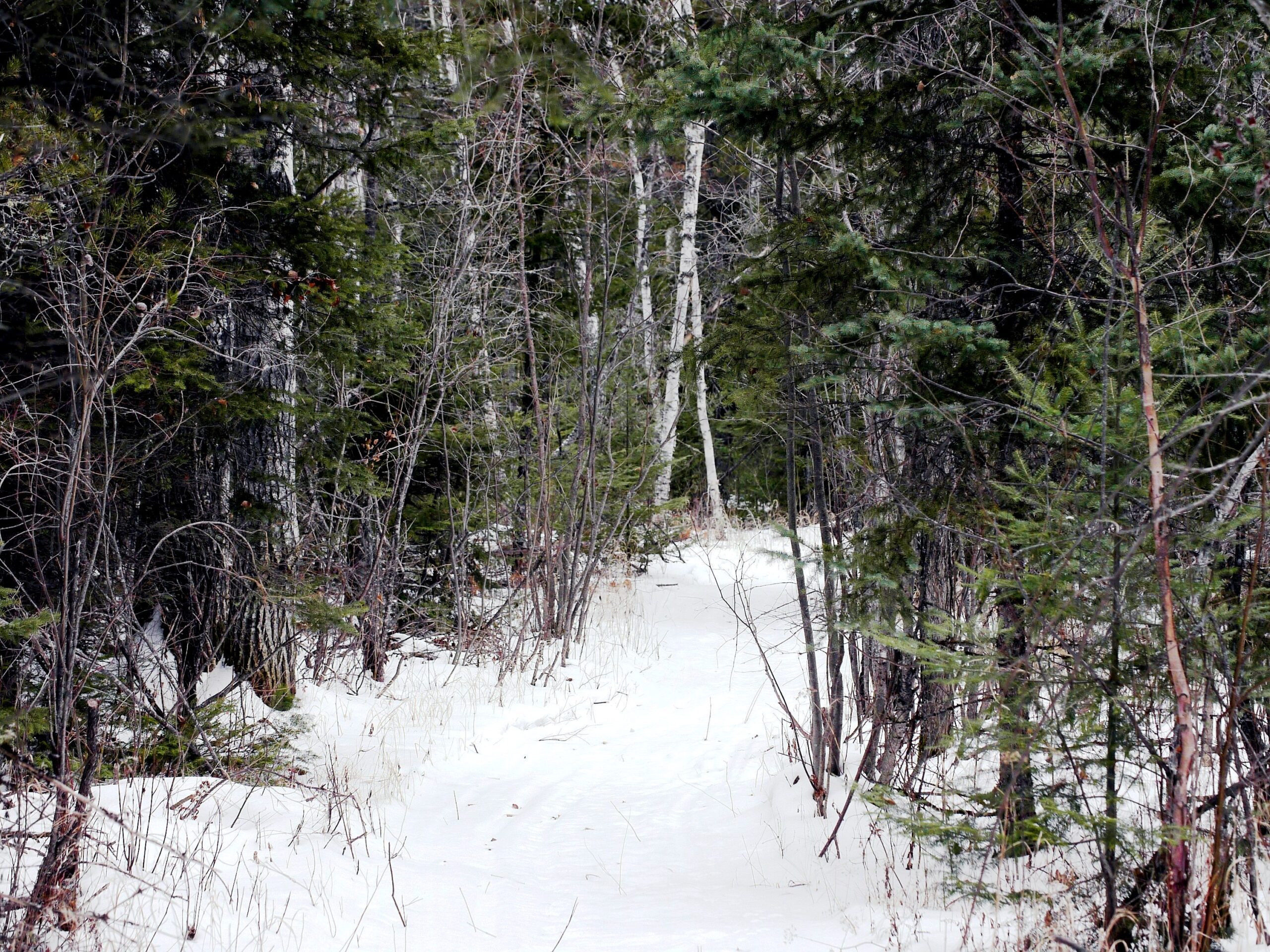
But why come to the surface in winter at all? The reason remains obscure, but it has been suggested that winter activity might help avoid predation; there are far more hungry organisms about in the warmer months. Another suggestion is that snow provides a uniform substrate on which to walk; it is easier for a flightless fly to cover more walking-distance and find a mate on a smooth flat surface than the rough, uneven, and complex terrain of the boreal forest floor (Fig. 5).
Figure 5: A trail near Pinawa, Manitoba showing typical habitat where snow flies can be found on warm winter days. © P. Taylor, used with permission.

And, indeed, these flies can’t fly. They have lost their wings and flight muscles. Their subnivean (under-the-snow) habitat does seem to make wings redundant and, even when above the snow, temperatures are likely too low to permit extended flight. But how loss of wings evolved along with this winter life-style is not understood. The females of at least some species take advantage of the loss of flight muscles by using that space to store more eggs (Fig. 6).
Figure 6: The head and thorax of a female snow fly. The thorax is shown in cross-section. Like all snow flies, the wings are absent, as are the flight muscles that would be located in the thorax. In this species, the area where the wing muscles would normally be is used to store additional eggs. From Byers (1983).
Many insects avoid freezing over winter by producing sugars and proteins in their body fluids to create an ‘anti-freeze’; they can lower their internal freezing temperature by keeping ice crystals from forming as early as they would ordinarily. Many freeze-tolerant insects can survive temperatures well below -25°C. Surprisingly, snow flies aren’t particularly good at producing antifreeze nor are they very freeze tolerant; they freeze (and die) at body temperatures below about -6°C. This means that they are restricted to the (relatively) warm subnivean world most of the winter, and explains why their mate-searching activities are limited to warmer days (as noted, about -2°C or higher). One of the snow fly’s more important adaptations is that they appear to have modified nerve and muscle function to operate at low temperatures. They can remain active to the point of freezing! This means, that on a sunny day when the dark body can absorb solar heat and remain above air temperature, a snow fly can be actively walking at -10°C (Fig. 7).
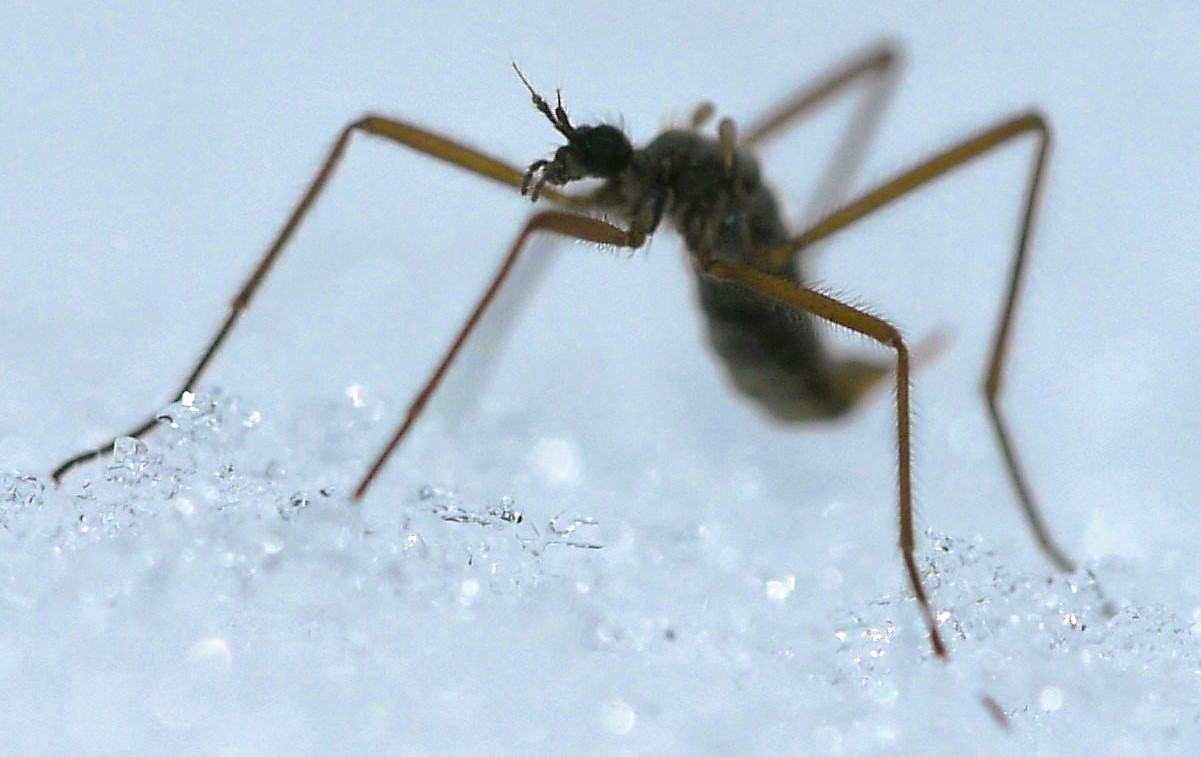
Figure 7: A female snow fly (Chionea valga) actively walking on the snow near Pinawa, Manitoba on January 27, 2015. © P. Taylor, used with permission.
A more astounding adaptation: it has recently been discovered that a snow fly can self-amputate its legs to keep a freezing limb from transferring killing ice crystals into its body and destroying critical internal organs. Many insects, and especially summer crane flies, lose their long, spindly legs quite easily if held; mechanical amputation of a leg can help to escape a predator. But the larger, more substantial legs of snow flies do not come off by pulling; rather, they are triggered to amputate by temperature-regulated nerves so that when a freezing leg is detected, amputation occurs. When air temperatures drop quickly, this can buy a little more time for a snow fly out on the surface, allowing it to seek shelter under the snow and avoid a frosty death.
You can learn more about amazing snow flies in the articles listed below; both provide excellent summaries on these surprising winter insects. You can explore the life of insects throughout the year and discover their incredible diversity in the Museum’s Boreal Gallery and Prairies Gallery, where you can get up-close and personal with hundreds of species, beautiful and bizarre.
Taylor, Peter. 2016. Snow flies and other winter invertebrates near Pinawa, Manitoba. Blue Jay 74(2): 18-22. https://bluejayjournal.ca/index.php/bluejay/article/view/6112/6101
Golding, D., Rupp, K., Sustar, N., Pratt, B. and Tuthill, J. 2023. Snow flies self-amputate freezing to sustain behavior at sub-zero temperatures. Current Biology 33: 1-8. https://doi.org/10.1016/j.cub.2023.09.002




